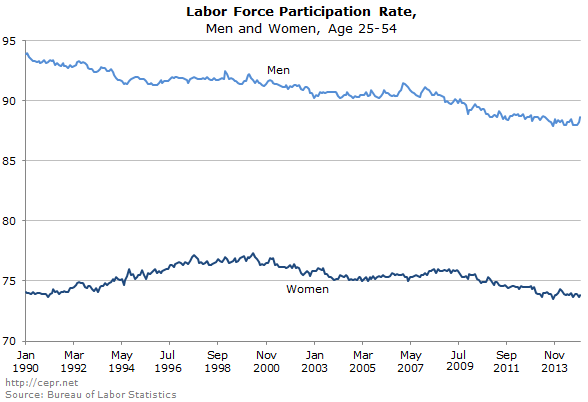Fact-based, data-driven research and analysis to advance democratic debate on vital issues shaping people’s lives.
Center for Economic and Policy Research
1611 Connecticut Ave. NW
Suite 400
Washington, DC 20009
Tel: 202-293-5380
Fax: 202-588-1356
https://cepr.net
February 6, 2015
Labor force participation rates of prime age workers are still far below pre-recession levels.
While the unemployment rate edged up, the overall EPOP also rose, hitting 59.3 percent, a new high for the recovery. However this is still 3.7 percentage points below the average for the year before the recession. Contrary to what is frequently claimed, most of this decline is due to prime age workers (ages 25-54) dropping out of the labor force. That reversed the pre-recession trend, in which the percentage of both prime age men and women in the labor force had been rising. The number of people involuntarily working part-time was little changed from December but was 453,000 below its year-ago level. Voluntary part-time is up by 535,000 from a year ago. Another positive item was that the percentage of unemployment due to people voluntarily quitting their jobs hit a recovery high of 9.5 percent. This is still far below the rates of more than 11 percent before the downturn and more than 14 percent in the 1990s boom.
